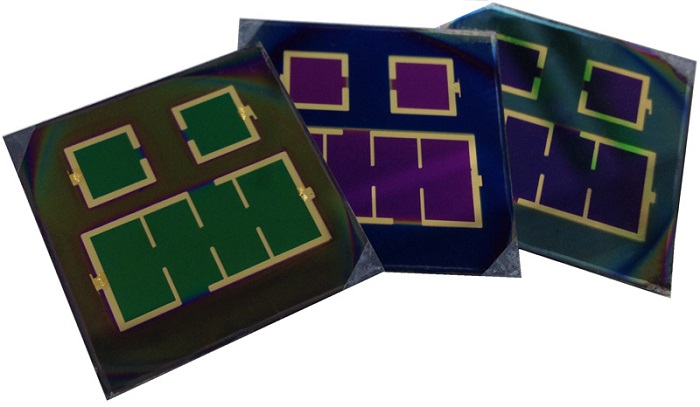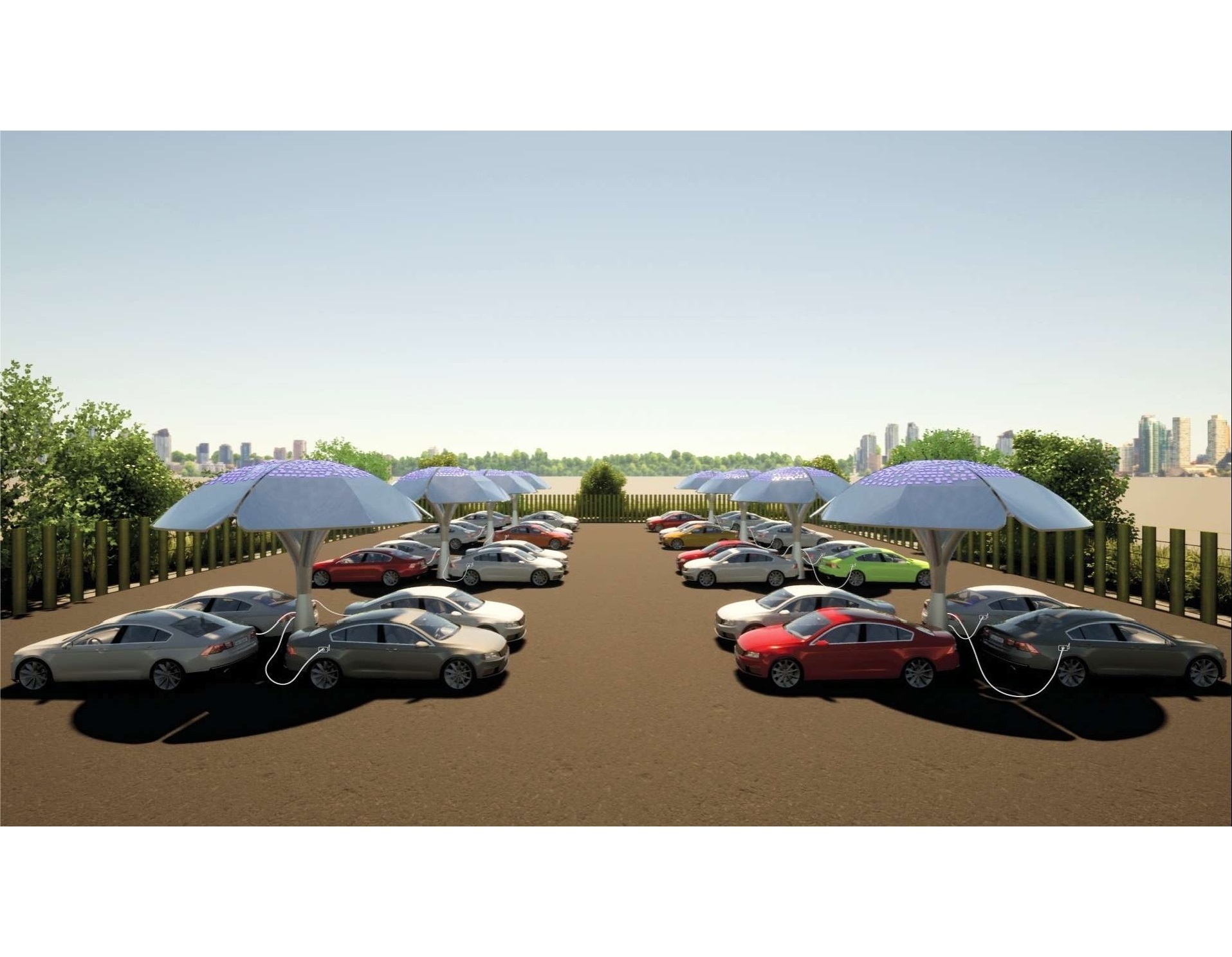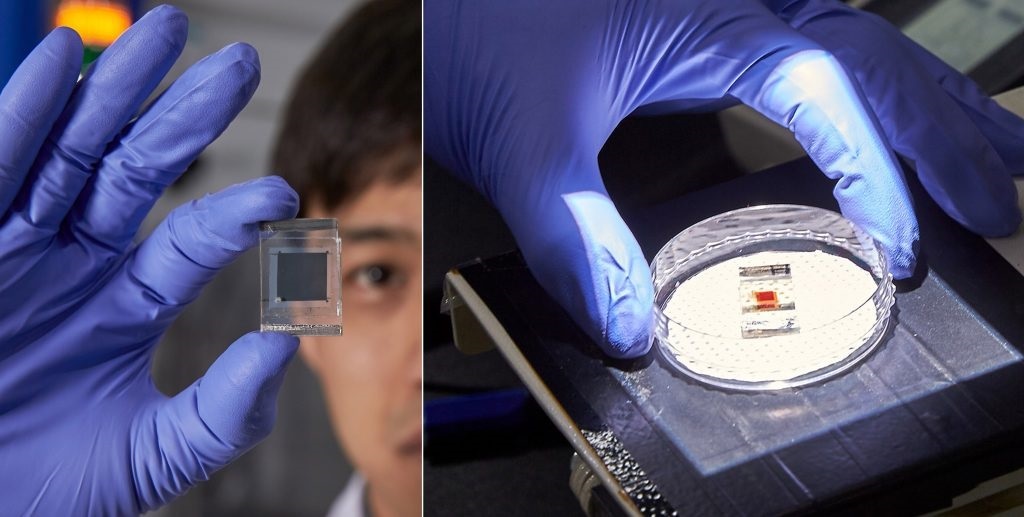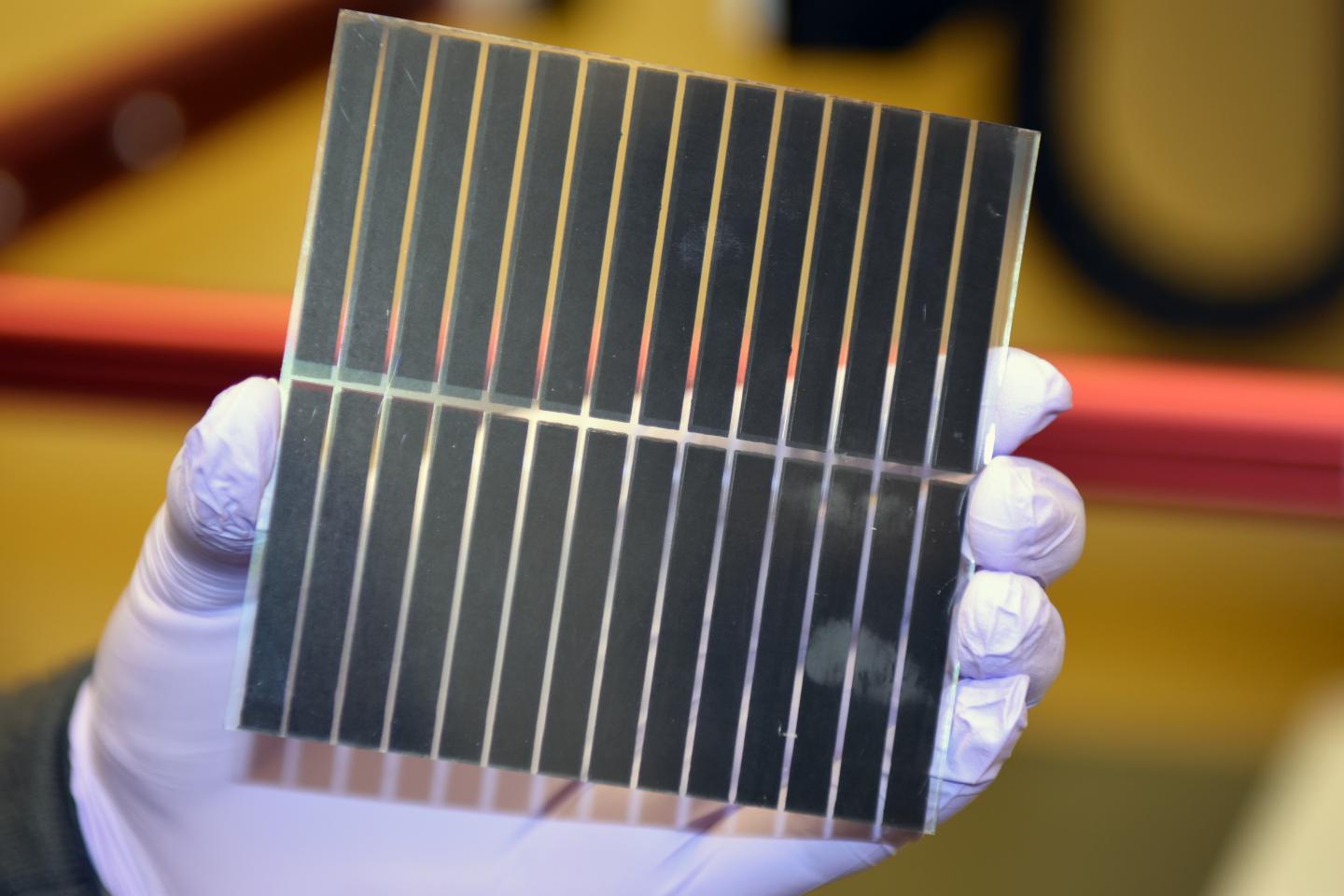Neuchâtel, February 25, 2016 – Three Swiss organizations and their nine international partners have launched a European research project that aims to develop novel types of photovoltaic cell. The cells will use so-called perovskite PV technology, which has the potential to be both low-cost and extremely efficient. The project, entitled CHEOPS, is coordinated by CSEM and has a budget of 5 million euros.
The term perovskite photovoltaics refers to a novel class of materials with a special crystal structure that makes possible the fabrication of extremely efficient solar cells in a simple manner and at potentially low manufacturing costs. But this is so far true only for small devices produced in labs, and those devices still have limited long-term reliability. CHEOPS aims to change this and to advance the technology to a position from which it can be taken to market. More specifically, the project will pursue this goal by upscaling the technology, by developing a "tandem cell" with a perovskite cell on top of a conventional silicon-based cell, and by assessing any potential risks and benefits involved in the technology's deployment.
Upscaling the technology
"As researchers, we may get all excited when we manage to achieve a new efficiency record with a cell of—say—1 mm2," says Sylvain Nicolay, manager at the CSEM PV-center and CHEOPS project coordinator. "But to prove to the industry that the technology is feasible we need modules of at least 15 by 15 centimeters, and we need them to be stable." Upscaling also means being able to produce these cells using tools, techniques, and procedures that can readily be implemented in an industrial environment.
The best of both worlds: Tandem cells
In addition to upscaling the technology, researchers will also produce tandem cells. A tandem cell is a combination of a crystalline silicon cell and a perovskite cell. "Such tandem cells can harvest a broader spectrum of light than a single cell, which should lead to an increase in their efficiency further approaching the 30 percent range," observes Christophe Ballif, director of the PV-center. In the longer term, existing manufacturing methods used for silicon devices might require only minor modification before being used to produce tandem cells, as the perovskite layer would simply be added on top of the conventional cell to act as an “efficiency booster”.
Helping to democratize solar energy
CSEM and its partners are looking forward to joining forces in this European project, believing that it is essential to continually improve the attractiveness of solar energy—lowering cost and improving performance. Perovskite photovoltaic technology can be an important step in this direction, and at the same time can create valuable new development opportunities for companies active in this sector.
The CHEOPS project is co-funded by the European research and innovation program Horizon 2020 (project number 653296). It officially began in February 2016 and will end in January 2019.













